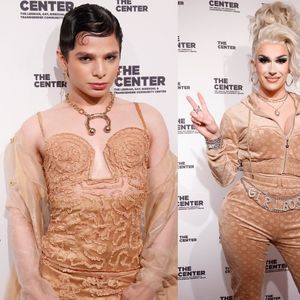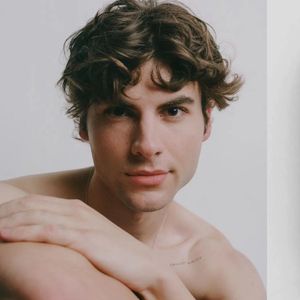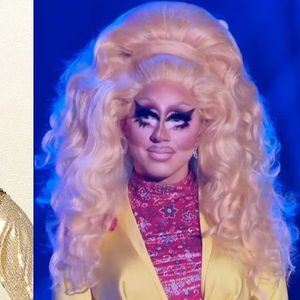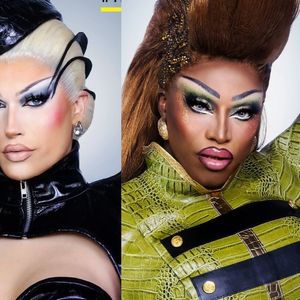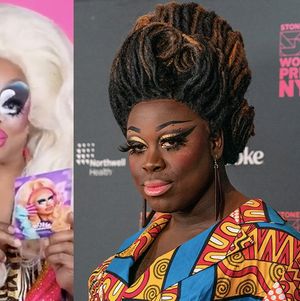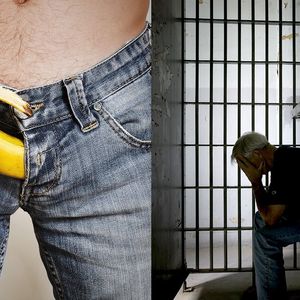TOKYO -- Graham Kolbeins, now 32, was a Canadian high schooler when he first encountered the work of Gengoroh Tagame and other artists of gay manga -- a genre of erotic graphic novels devoted to same-sex love stories.
"I found this sense of recognition in the images of desire that they were putting out into the world," recounted Kolbeins. He felt particularly moved by the work of Tagame, who is often compared to Tom of Finland for his drawings of burly and hairy men.
Tagame's art "wasn't really something I had seen through American pop culture at that age," said Kolbeins. "I was instantly drawn to it and wanting to know more about it."
 Pictured: Dorian Edward Wood and Graham Kolbeins at the 2019 Outfest LGBTQ Film Festival
Pictured: Dorian Edward Wood and Graham Kolbeins at the 2019 Outfest LGBTQ Film Festival
Over a decade later, Kolbeins -- bearded, his hair tinged a shade of pink -- is sitting in CoCoLo cafe, a restaurant in the midst of Tokyo's gayborhood, Shinjuku Ni-chome, discussing his new documentary, Queer Japan, with The Advocate. At that moment in early July, the film was about to have its world premiere in a place of honor as the closing-night film of Rainbow Reel Tokyo, the city's LGBTQ film festival.
The documentary, which will screen Sunday and Monday at NewFest in New York City, is an invaluable resource for those who, like Kolbeins in his youth, want to know more about LGBTQ life in Japan. Tagame himself is one of the subjects -- others include butoh dancer Atsushi Matsuda, transgender activist Tomato Hatakeno, party promoter Margarette, drag performer Vivienne Sato, and Hiroshi Hasegawa, an HIV activist and cofounder of the gay manga magazine G-men. Their collective stories paint a colorful and vibrant picture of the modern-day movement for LGBTQ equality in Japan.
Kolbeins was first inspired to make Queer Japan via the world of gay manga. Noticing that many of these works lacked English translations, he began interviewing the artists who created them in 2011 in the hopes of developing a book. His research brought him to Tokyo in 2012 -- and he immediately saw the potential for a larger project.
"That was the first time I started to see how dense and fascinating the queer culture here was," Kolbeins said. "There were just so many facets of it that went beyond this niche of gay manga that was my entryway."
"This culture needs to be recognized around the world because so often we see LGBT culture as centered in America -- especially through the lens of, like, gay history starting at Stonewall," said Kolbeins, noting that Japan's queer culture can be traced back to ancient times.
 Pictured: Hiroshi Hasegawa and other activists at Tokyo Rainbow Pride
Pictured: Hiroshi Hasegawa and other activists at Tokyo Rainbow Pride
While the country still does not recognize marriage equality, Japan is relatively progressive for Asia in its views toward LGBTQ people. For example, the majority of people support same-sex marriage, and the artists and activists profiled in Queer Japan -- through their trials and triumphs -- each present a piece of this liminal moment of the movement.
Queer Japan focuses less on history and more on the present day. Scenes include a flourishing Pride parade flush with corporate sponsors and a speech from former ambassador Caroline Kennedy; a gender-bending party thrown by Margarette called Department H where artists transform into, say, a furry or a giant pig that gives birth onstage; and the culture of Shinjuku Ni-chome, which boasts the world's highest concentration of gay bars (an estimated 350!), many of them tiny rooms where a bartender pours a pint or a cup of green tea to a handful of regulars.
Many of these bars are open only to "members," and pictures without permission are not allowed, pointing to the ongoing stigma experienced by some members of Japanese society. And while there are some LGBTQ people elected to office in Japan, there remain many legal challenges, including an internationally condemned law that lets trans people to change their gender identity -- but only after forced sterilization.
Observing scenes like these several years ago, Kolbeins -- a film editor by training who had already created several shorts -- saw fertile ground for a film, and he decided to embark on directing his first feature-length documentary. To this end, he applied for and won a grant from the Japan-U.S. Friendship Commission, which also granted him a five-month visa to complete the project.
Kolbeins also enlisted Hiromi Iida, who had previously made shorts of Margarette and other drag artists, as a producer and a source for local interviews; Kolbeins reached out through Twitter to connect with and recruit her. With these pieces assembled, production officially began in 2015 and extended until the following year.
Iida herself fell into LGBTQ filmmaking; she was originally hired as a translator for the media outlet Vice. The editors there immediately recognized her familiarity with Tokyo's drag scene and encouraged her to create her own short on the subject. Iida identifies as straight, but she began immersing herself in queer culture through a gay roommate in college and now volunteers with Tokyo Rainbow Pride. "It was always natural for me to have gay friends," said Iida, sitting next to Kolbeins in the Shinjuku cafe. "I don't know how I got to know all those fabulous people. It just happened!"
 Pictured: Drag performer Simone Fukayuki
Pictured: Drag performer Simone Fukayuki
Being an independent production, Queer Japan had a lot of freedom in the stories it could tell. Kolbeins followed his own research and Iida's connections to find subjects, and they in turn would often recommend other interviews. At times, the amount of content -- and the number of people who wanted to participate in the documentary -- became overwhelming.
"I bit off a little more than I could chew sometimes during production, but it was good to have that freedom to allow people to tell us their stories and tell us what was important rather than placing preconceived notions on what we should be expressing in this film," said Kolbeins; Iida helped keep him in check.
However, this diversity of subjects succeeds in showcasing the great diversity of what it means to be "queer" in Japan -- a word that has no easy translation in Japanese. Both Kolbeins and Iida expressed the hope that their film would serve as a visual definition and an act of activism that would broaden society's perceptions of LGBTQ people and shatter some stereotypes in the process.
"People can see and realize there are so many different varieties of queer people," said Iida. "I don't think there'll be any translation word for queer, the proper one. Even for me, it's difficult to translate or understand. However, watching this film, I think each audience [member] can get a different idea or concept of what queer is -- the people who don't know about this world."
"I hope that the film opens people's minds and expands their perspective on how many different ways there are of being in the world," even beyond identities like gay and transgender, said Kolbeins. "I think that is a form of activism unto itself, because the more you understand about others, the easier it is to get along in the world and accept difference."
"Hopefully, [Queer Japan] has a positive impact, not only here in Japan but also internationally where people can see that [Japan's] queer culture goes beyond what they've seen in American culture," he concluded. "Now they can start to explore the beauty of the Japanese queer scene."
Queer Japan opened to a sold-out theater at Rainbow Reel Tokyo. It screens Sunday at 6:45 p.m. and Monday at 3:45 p.m. at the Cinepolis Chelsea in New York City as part of NewFest. Watch the trailer below.
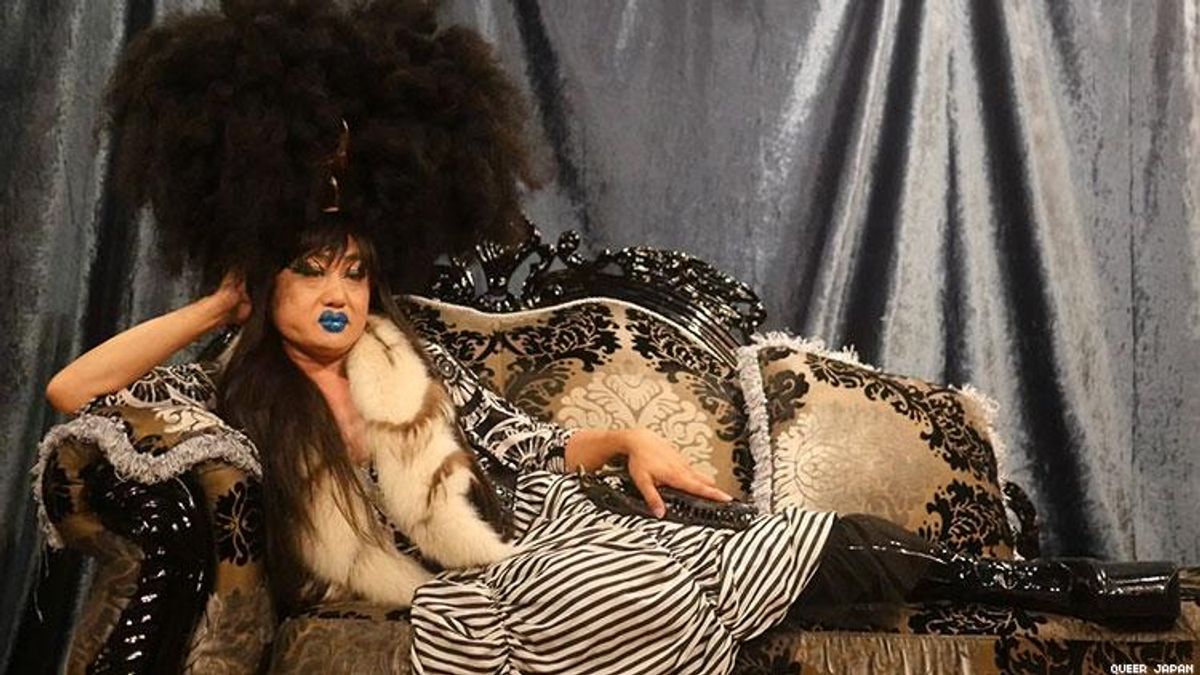

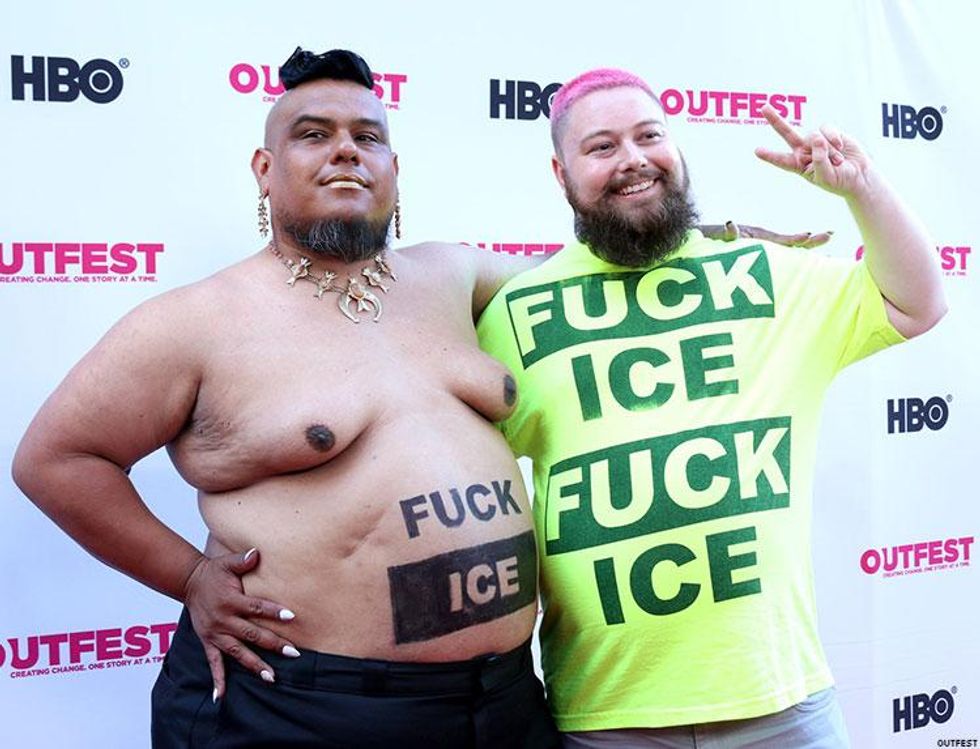 Pictured: Dorian Edward Wood and Graham Kolbeins at the 2019 Outfest
Pictured: Dorian Edward Wood and Graham Kolbeins at the 2019 Outfest 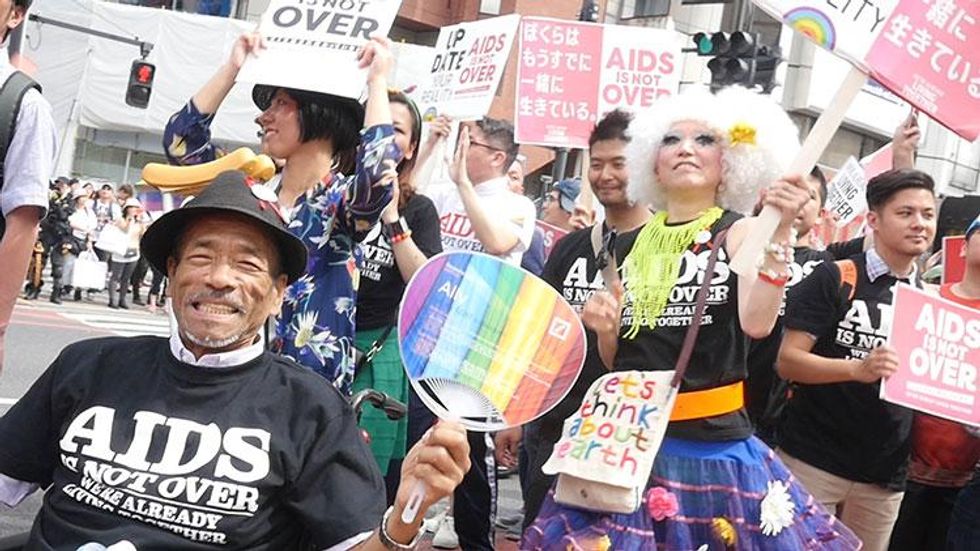 Pictured: Hiroshi Hasegawa and other activists at Tokyo Rainbow Pride
Pictured: Hiroshi Hasegawa and other activists at Tokyo Rainbow Pride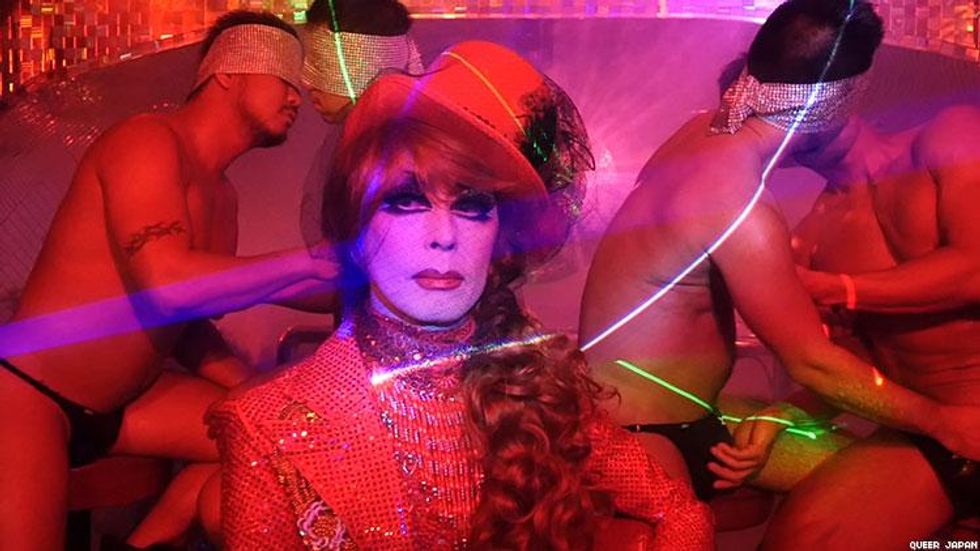 Pictured: Drag performer Simone Fukayuki
Pictured: Drag performer Simone Fukayuki
































